- Sorrel: An Easy-to-Grow Vegetable for Your Garden
- Benefits of Growing Sorrel:
- How to Grow Sorrel:
- How to Use Sorrel in Cooking:
- Choosing the Right Sorrel Variety
- French Sorrel
- Broadleaf Sorrel
- Red-veined Sorrel
- Sheep’s Sorrel
- Choosing the Right Variety
- Site Selection and Soil Preparation
- Planting Sorrel Seeds or Transplants
- Watering and Mulching Sorrel
- Watering Sorrel Plants
- Mulching Sorrel Plants
- Fertilizing Sorrel for Optimal Growth
- 1. Soil Testing
- 2. Organic Matter
- 3. Balanced Fertilizer
- 4. Nitrogen Boost
- 5. Foliar Feeding
- 6. Mulching
- 7. Avoid Over-Fertilization
- Harvesting and Storing Sorrel
- Harvesting:
- Storing:
- Culinary Uses and Nutritional Benefits
- Common Pests and Diseases of Sorrel
- Pests
- Diseases
- Conclusion
- “Question-Answer”
- What is sorrel and how is it grown?
- What are the properties of sorrel?
- Can sorrel be grown in containers?
- How long does it take for sorrel to grow?
- Are there any pests or diseases that affect sorrel?
- “Video” 5 Must-Grow Perennial Vegetables: Harvest Year After Year…
Sorrel is a leafy green vegetable that is commonly grown in home gardens for its unique tart flavor and nutritional benefits. It belongs to the dock family and is known for its slightly tangy taste, which is often compared to that of lemon or sour apple. Sorrel can be grown easily in the vegetable garden, making it a popular choice for many gardeners.
One of the appealing aspects of growing sorrel is its hardiness and adaptability. It can thrive in a variety of climates and soil types, making it suitable for gardeners in various regions. Sorrel can be grown from seeds or transplants, and it requires minimal care and maintenance. It is a perennial plant, meaning it will continue to grow and produce leaves year after year, providing a consistent supply of fresh greens for cooking and salads.
Another reason why sorrel is a favored vegetable for gardeners is its nutritional value. It is rich in vitamins A and C, as well as iron and potassium. These nutrients are essential for maintaining good health and can contribute to overall well-being. Additionally, sorrel contains antioxidants, which help to protect the body from harmful free radicals and may have potential anti-inflammatory properties.
In culinary terms, sorrel is a versatile ingredient that can be used in a variety of dishes. Its tart taste adds a unique flavor to soups, sauces, and salads. It can also be cooked and used as a filling for pies and tarts. Many people enjoy the lemony flavor of sorrel in refreshing summer salads or as a garnish for fish or chicken dishes.
Sorrel: An Easy-to-Grow Vegetable for Your Garden
Sorrel is a leafy green vegetable that is easy to grow in your garden. It is a member of the dock family and is known for its tangy, lemon-like flavor. Sorrel can be grown in both sunny and partially shaded areas, making it a versatile and low-maintenance option for any garden.
Benefits of Growing Sorrel:
- Sorrel is rich in vitamins A, C, and B-6, as well as iron, potassium, and magnesium.
- It has antioxidant properties, which can help to boost your immune system.
- The tangy flavor of sorrel adds a unique taste to fresh salads, soups, and sauces.
- It can be harvested throughout the growing season, providing a continuous supply of fresh greens.
- Sorrel is also a great companion plant, as it can deter pests and attract beneficial insects to your garden.
How to Grow Sorrel:
Here are the steps to grow sorrel in your vegetable garden:
- Choose a sunny or partially shaded location in your garden.
- Prepare the soil by removing any weeds and loosening it with a garden fork or tiller.
- Sow sorrel seeds directly into the soil, about 1/2 inch deep and 12 inches apart.
- Water the seeds well and keep the soil moist until the seeds germinate, which usually takes about 7-10 days.
- Once the sorrel plants are established, water them regularly, especially during dry periods.
- Harvest the outer leaves of the sorrel plants when they reach a size of 4-6 inches. This will encourage new growth.
- Continue to harvest the leaves as needed throughout the growing season.
How to Use Sorrel in Cooking:
Sorrel is a versatile vegetable that can be used in a variety of dishes. Here are some ideas:
- Add sorrel leaves to fresh salads for a tangy twist.
- Blend sorrel leaves into a creamy soup for added flavor.
- Sauté sorrel with garlic and olive oil, then serve it as a side dish.
- Include sorrel in pesto or salsa verde for a vibrant green color.
- Use sorrel leaves as a wrap for sandwiches or sushi rolls.
In conclusion, sorrel is an easy-to-grow vegetable that can add a unique flavor to your garden and your cooking. With its tangy taste and abundance of nutrients, it is a great addition to any vegetable garden.
Choosing the Right Sorrel Variety
There are several varieties of sorrel that you can choose from for your vegetable garden. Each variety has its own unique characteristics and flavors, so it’s important to consider your preferences and growing conditions when selecting the right sorrel for you.
French Sorrel
French sorrel, also known as garden sorrel, is one of the most popular varieties. It has a tangy and slightly sour taste, with large and smooth leaves. French sorrel is great for salads, soups, and sauces.
Broadleaf Sorrel
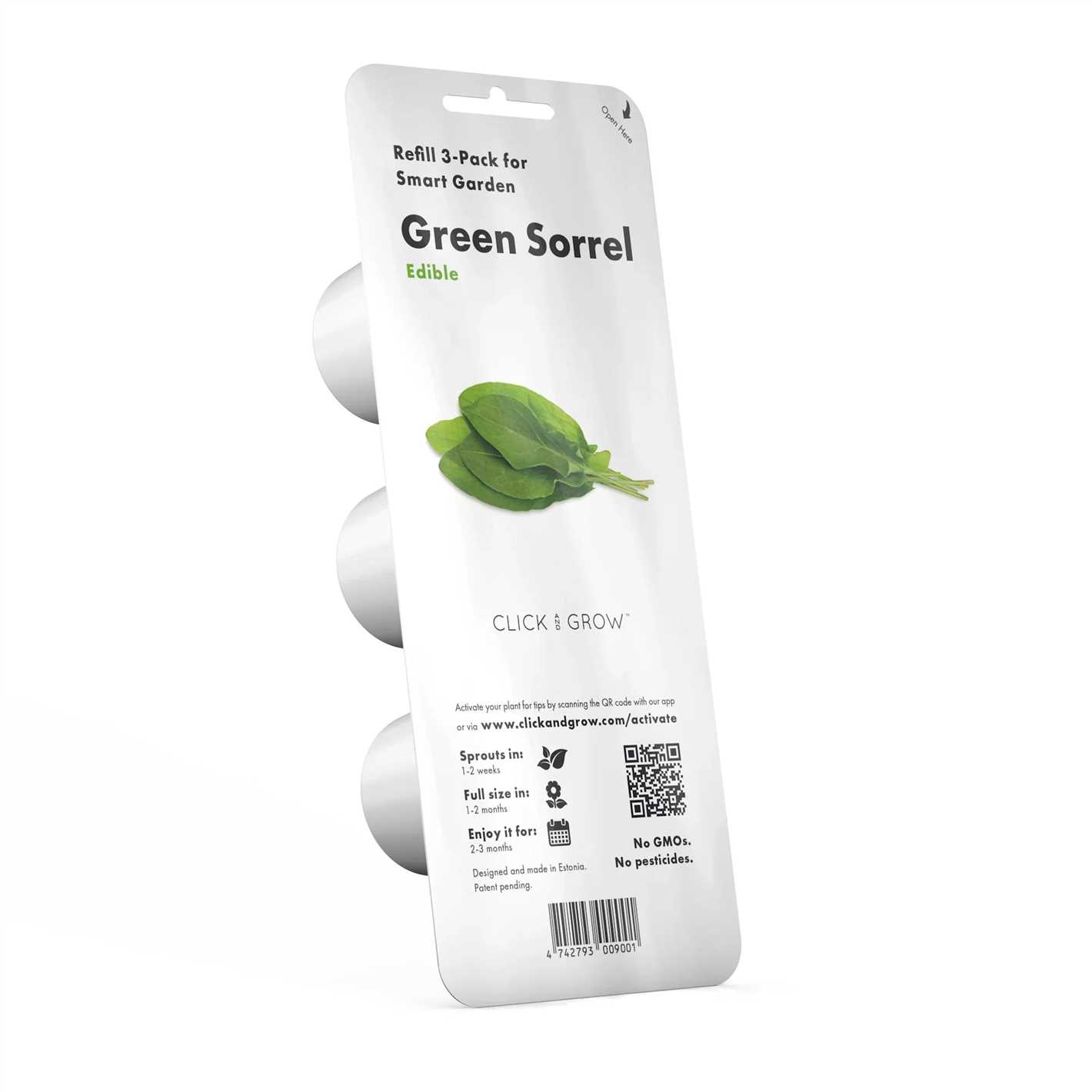
Broadleaf sorrel, as the name suggests, has wide and flat leaves. It has a milder flavor compared to French sorrel and is often used in cooking as a spinach substitute. Broadleaf sorrel is a versatile variety that can be used in salads, stir-fries, and pastas.
Red-veined Sorrel
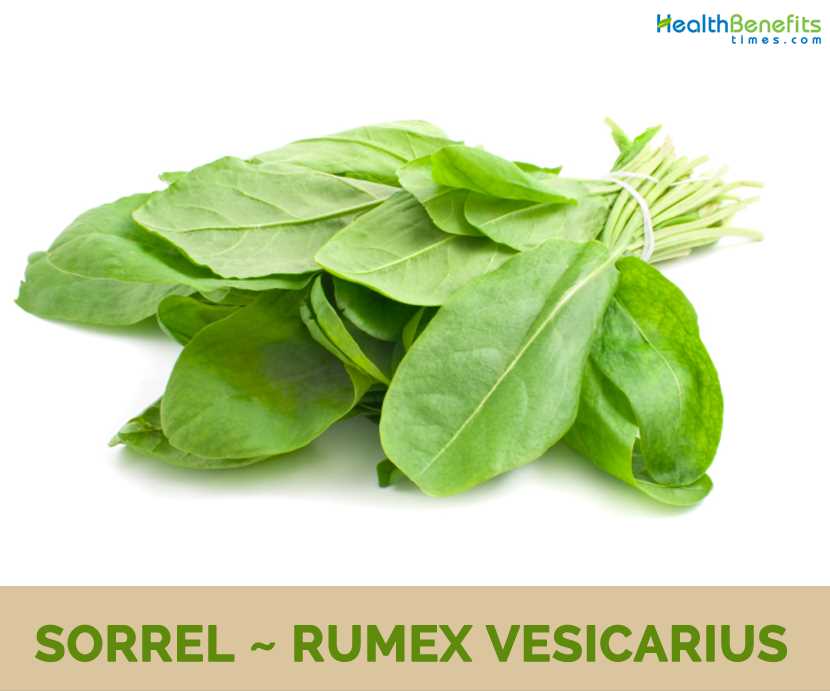
Red-veined sorrel is a visually striking variety with vibrant red veins running through its green leaves. It has a tart and tangy flavor, similar to French sorrel. The red color adds a pop of color to salads and can be a beautiful garnish for various dishes.
Sheep’s Sorrel
Sheep’s sorrel is a wild variety that has a more intense and acidic flavor compared to other cultivated sorrel varieties. It is often used sparingly in dishes as a flavor enhancer. Sheep’s sorrel is known for its tartness and can add a unique element to sauces and marinades.
Choosing the Right Variety
When choosing a sorrel variety, consider the taste you prefer and the culinary uses you have in mind. French sorrel and broadleaf sorrel are great options for beginners and have a mild, versatile flavor. If you want to experiment with bolder flavors and visually striking dishes, red-veined sorrel or sheep’s sorrel may be the way to go.
Additionally, consider the growing conditions in your garden. Some sorrel varieties, like French sorrel and broadleaf sorrel, can tolerate a wide range of conditions and are generally easy to grow. However, other varieties, like red-veined sorrel, may require more specific care and attention.
Ultimately, choosing the right sorrel variety comes down to personal preference and your specific gardening situation. Regardless of the variety you choose, sorrel is a versatile and flavorful addition to any vegetable garden.
Site Selection and Soil Preparation
When selecting a site for growing sorrel in your vegetable garden, it is important to consider a few key factors. Sorrel thrives in full sun to partial shade, so choose an area that receives at least 6 hours of sunlight per day. Additionally, sorrel prefers moist, well-drained soil. Avoid areas with heavy clay soil or poor drainage.
Before planting sorrel, it is important to prepare the soil properly. Begin by removing any weeds or grass from the area. Sorrel plants have shallow roots, so it is important to loosen the soil to a depth of 8 to 10 inches. This can be done by using a garden fork or tiller.
Next, amend the soil with organic matter such as compost or well-rotted manure. This will help improve the soil’s texture and fertility. Spread a 2 to 3-inch layer of organic matter over the top of the soil and use a rake to incorporate it into the top few inches.
Once the soil is prepared, it is important to check its pH level. The ideal pH for growing sorrel is between 6.0 and 7.0. If the soil is too acidic, lime can be added to raise the pH. If it is too alkaline, sulfur or peat moss can be added to lower the pH.
Finally, smooth the soil surface with a rake and remove any large clumps or rocks. This will provide a good seedbed for planting sorrel seeds or transplants. It is recommended to sow sorrel seeds directly into the prepared soil, spacing them about 8 inches apart.
Following these site selection and soil preparation steps will help ensure optimal growing conditions for your sorrel plants and result in a bountiful harvest.
Planting Sorrel Seeds or Transplants
1. Choosing the planting site: Sorrel prefers a sunny location with well-draining soil. It can tolerate partial shade, but full sun is ideal for its growth.
2. Preparing the soil: Before planting sorrel seeds or transplants, prepare the soil by removing any weeds or grass. Loosen the soil to a depth of about 8-10 inches and mix in compost or well-rotted manure to improve fertility.
3. Planting sorrel seeds:
- Sow the seeds directly into the prepared soil, spacing them about 12 inches apart.
- Cover the seeds with a thin layer of soil, about 1/4 inch deep.
- Water the seeds gently to moisten the soil, being careful not to wash them away.
4. Planting sorrel transplants:
- Dig a hole in the prepared soil that is slightly larger than the root ball of the transplant.
- Carefully place the transplant in the hole, making sure the top of the root ball is level with the soil surface.
- Backfill the hole with soil, firming it gently around the transplant.
- Water the transplants thoroughly to settle the soil around the roots.
5. Care and maintenance:
- Water the sorrel regularly, keeping the soil evenly moist but not waterlogged.
- Apply a layer of mulch around the plants to help retain moisture and suppress weeds.
- Fertilize the sorrel plants with a balanced fertilizer once a month during the growing season.
- Harvest the leaves regularly to encourage new growth and prevent the plants from becoming woody.
6. Harvesting sorrel:
Harvest the outer leaves of the sorrel plant as needed once they reach a usable size, usually when they are about 6-8 inches long. Cut the leaves near the base of the plant, leaving the inner leaves to continue growing. Avoid harvesting more than one-third of the plant at a time to ensure its continued vigor.
Watering and Mulching Sorrel
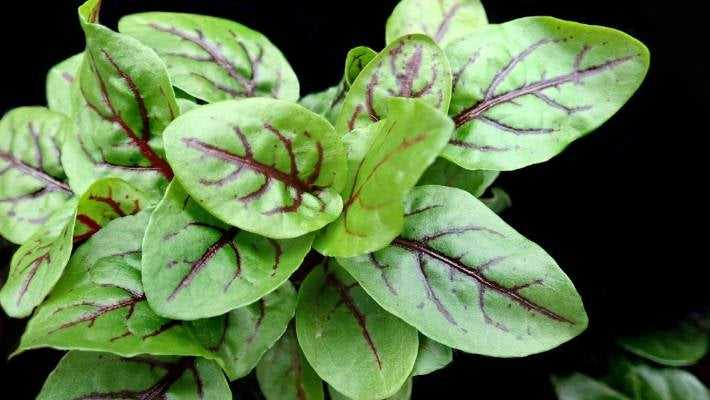
Watering is an important aspect of growing sorrel. This vegetable requires consistent soil moisture to thrive. Proper watering techniques ensure healthy plant growth and maximize the yield of sorrel leaves.
Watering Sorrel Plants
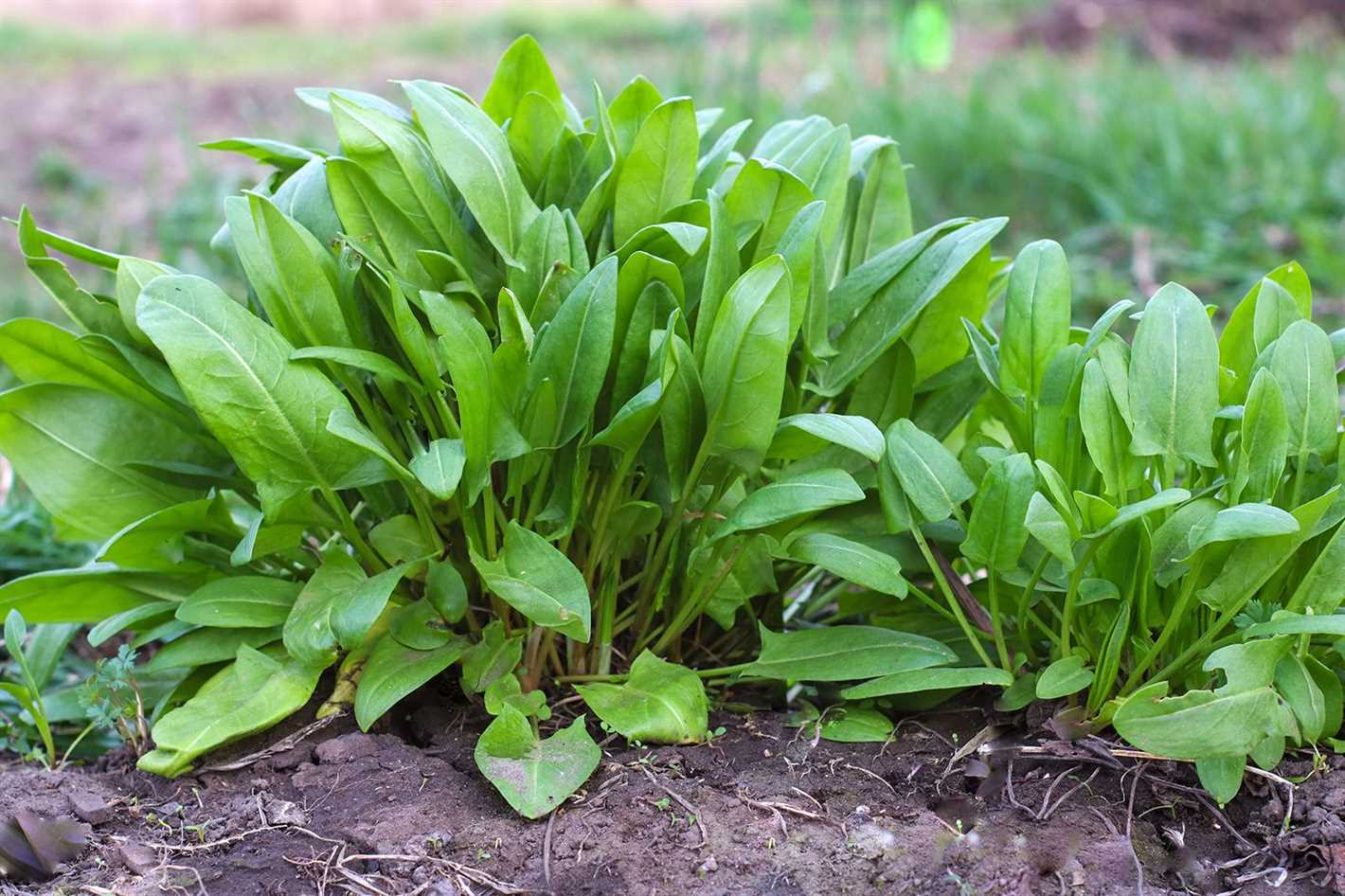
It is best to water sorrel plants deeply and consistently. The soil should be kept evenly moist, but not waterlogged. Overwatering can lead to root rot and other fungal diseases.
During hot and dry weather, sorrel plants may require more frequent watering. Check the soil moisture regularly by inserting your finger into the soil up to the second knuckle. If it feels dry at that depth, it’s time to water.
When watering sorrel, it is advisable to use a drip irrigation system or a soaker hose. This helps prevent water from splashing on the leaves, which can encourage disease development.
Mulching Sorrel Plants
Mulching sorrel plants helps conserve soil moisture, suppress weed growth, and maintain a more consistent soil temperature.
- Apply a layer of organic mulch, such as straw or wood chips, around the base of sorrel plants.
- Keep the mulch layer about 2-3 inches thick, taking care not to bury the sorrel crowns.
- As the mulch breaks down, it adds organic matter to the soil, improving its fertility.
- Avoid placing mulch directly on top of the sorrel leaves, as this can cause them to become damp and prone to rot.
Remember to regularly check the moisture level in the soil, even when using mulch. Depending on the weather conditions, you may need to adjust the watering frequency.
| Watering | Mulching |
|---|---|
| Keep soil evenly moist, not waterlogged | Apply a 2-3 inch layer of organic mulch |
| Use drip irrigation or soaker hose | Avoid mulching directly on top of leaves |
| Water more frequently in hot, dry weather | Mulch helps conserve soil moisture |
Fertilizing Sorrel for Optimal Growth
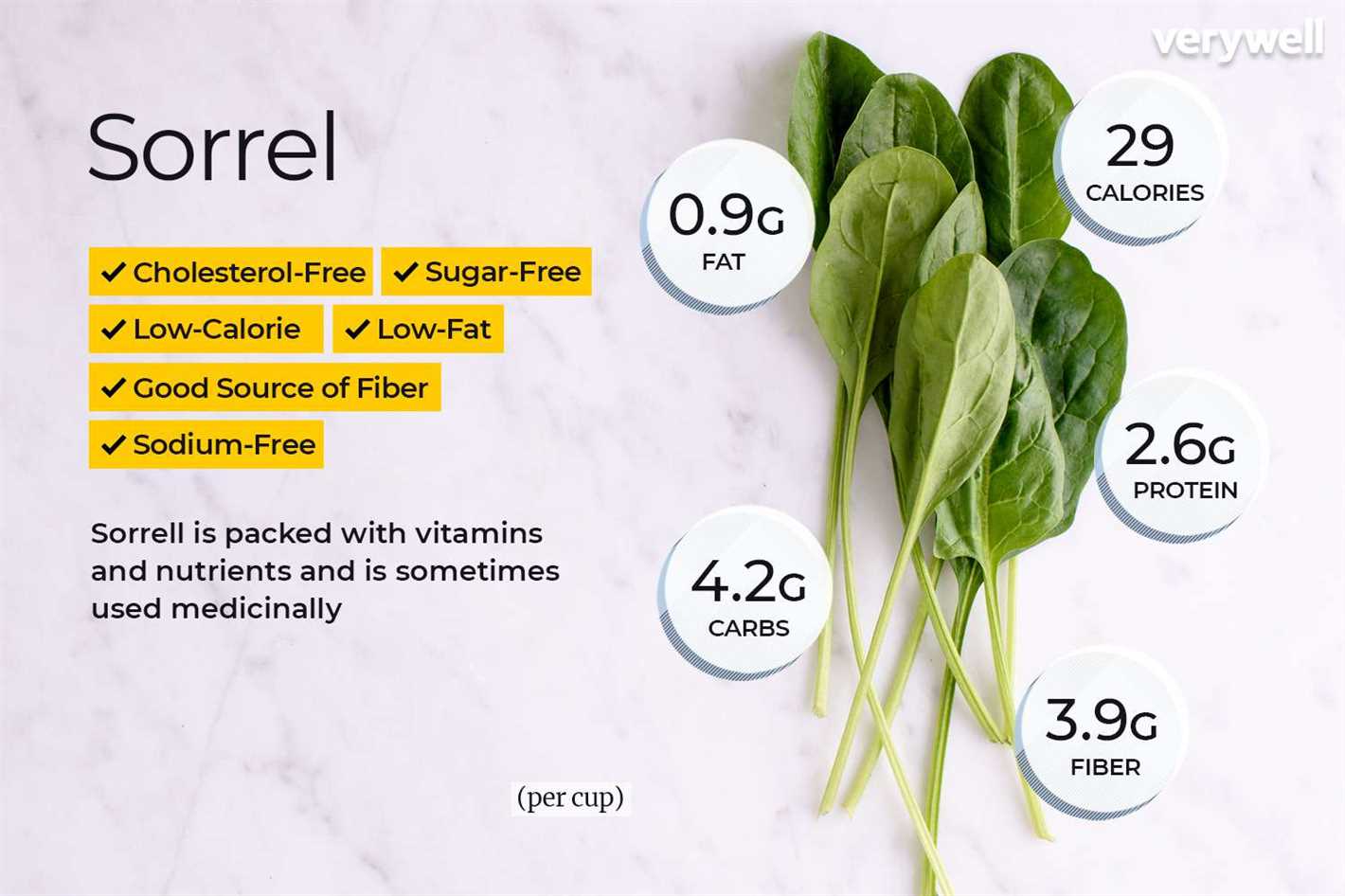
Providing the right nutrients to your sorrel plants is essential for their optimal growth and productivity. Fertilizers can help replenish the soil with the necessary nutrients that sorrel plants need to thrive. Here are some tips on fertilizing sorrel:
1. Soil Testing
Before you start fertilizing your sorrel plants, it’s important to test the soil to determine its nutrient content and pH level. This will help you understand what nutrients your sorrel plants may be lacking and adjust your fertilization plan accordingly.
2. Organic Matter
Adding organic matter, such as compost or well-rotted manure, to the soil can improve its fertility and provide a slow-release source of nutrients for sorrel plants. Mix in a generous amount of organic matter into the top layer of soil before planting sorrel.
3. Balanced Fertilizer
Once your sorrel plants are established, you can apply a balanced fertilizer to promote their growth. Look for a fertilizer with a ratio of nitrogen (N), phosphorus (P), and potassium (K) such as 10-10-10 or 14-14-14. Follow the package instructions for application rates.
4. Nitrogen Boost
Sorrel plants benefit from a nitrogen boost during their active growth period. You can apply a high-nitrogen fertilizer, such as fish emulsion or blood meal, to provide the necessary nitrogen for lush foliage development. Be sure to follow the recommended application rates to avoid over-fertilization.
5. Foliar Feeding
In addition to soil fertilization, foliar feeding can provide a quick nutrient boost to sorrel plants. Dilute a water-soluble fertilizer according to the package instructions and spray it directly on the leaves of the plants. This method allows the plants to absorb nutrients through their foliage.
6. Mulching
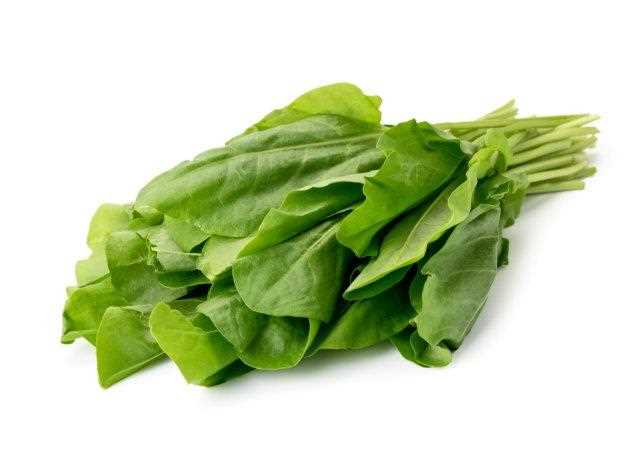
Applying a layer of organic mulch around the sorrel plants can help conserve moisture, suppress weeds, and slowly release nutrients into the soil as it breaks down. Use materials such as straw, dried leaves, or wood chips as mulch.
7. Avoid Over-Fertilization
While fertilizing sorrel plants is important, it’s crucial to avoid over-fertilization. Excessive amounts of fertilizer can lead to nutrient imbalances, burn the plants, or result in excessive leaf growth at the expense of quality. Always follow the recommended application rates and monitor the plants’ response to fertilization.
By properly fertilizing your sorrel plants, you can ensure their optimal growth, productivity, and overall health. Remember to adjust your fertilization approach based on your soil test results and closely monitor the plants’ response to fertilizers.
Harvesting and Storing Sorrel
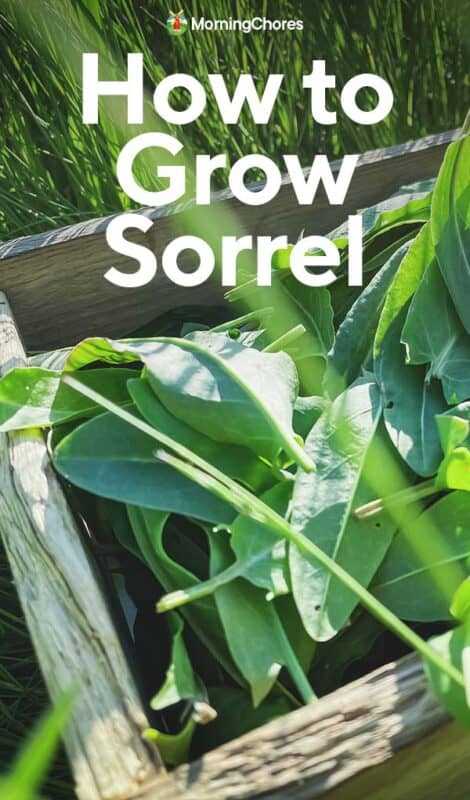
Harvesting sorrel is a simple and straightforward process. Here are some tips to help you harvest and store sorrel in your vegetable garden:
Harvesting:
- Start harvesting sorrel leaves when they reach a length of about 4-6 inches. This is usually around 8 weeks after planting.
- Use a pair of sharp garden shears or scissors to cut the outer leaves of the sorrel plant, leaving the inner leaves intact.
- For continuous harvest throughout the growing season, only remove a third of the leaves from each plant at a time.
- Harvest the leaves in the morning when they are fresh and full of flavor. Avoid harvesting when the leaves are wet from dew or rain.
Storing:
- After harvesting, gently wash the sorrel leaves in cold water to remove any dirt or debris.
- Pat the leaves dry with a clean towel or use a salad spinner to remove excess moisture.
- Place the sorrel leaves in an airtight container or a plastic bag with a few paper towels to absorb any remaining moisture.
- Store the container or bag in the refrigerator’s crisper drawer. Sorrel can stay fresh for up to a week when properly stored.
- Alternatively, you can freeze sorrel leaves for long-term storage. Blanch the leaves in boiling water for 2-3 minutes, then transfer them to an ice bath to cool. Drain and pack the leaves into airtight freezer bags or containers.
Note: Sorrel leaves are best used fresh, as their flavor tends to diminish with time. It’s recommended to harvest and use them as needed for the freshest taste.
Culinary Uses and Nutritional Benefits
Sorrel is a versatile herb that is commonly used in culinary preparations around the world. It has a tangy and lemony flavor, which adds a refreshing and acidic taste to a variety of dishes. Here are some popular culinary uses of sorrel:
- Sorrel soup: Sorrel soup, also known as “green borscht,” is a traditional dish in many Eastern European countries. It is made by cooking sorrel leaves with potatoes, onions, and sour cream, resulting in a delicious and vibrant green soup.
- Sorrel sauce: Sorrel can be used to make a flavorful sauce that pairs well with fish, chicken, or roasted vegetables. The sauce is made by sautéing sorrel leaves with butter, garlic, and cream. It adds a tangy and creamy element to your dishes.
- Sorrel pesto: Sorrel leaves can be blended with nuts, garlic, Parmesan cheese, and olive oil to make a delicious and vibrant pesto sauce. It can be used as a spread on sandwiches, a topping for pasta dishes, or a dip for crackers and bread.
- Sorrel salad: Sorrel leaves can be added to salads to add a tangy and refreshing element. They pair well with ingredients like goat cheese, strawberries, and toasted nuts. The leaves can be eaten fresh or slightly wilted.
In addition to its culinary uses, sorrel also offers several nutritional benefits. It is rich in vitamins A, C, and K, as well as minerals like potassium and magnesium. Sorrel is also a good source of dietary fiber and antioxidants, which can help promote overall health and well-being.
However, it’s important to note that sorrel contains oxalic acid, which can interfere with the absorption of calcium in the body. Therefore, it should be consumed in moderation, especially by individuals with kidney problems or a history of kidney stones.
| Nutrient | Amount per 100g |
|---|---|
| Vitamin A | 3016 IU |
| Vitamin C | 48.5 mg |
| Vitamin K | 46.9 mcg |
| Potassium | 392 mg |
| Magnesium | 87 mg |
| Fiber | 2.0 g |
In conclusion, sorrel is not only a flavorful herb but also a nutritious addition to your diet. Its tangy taste and vitamin-rich profile make it a versatile ingredient in various culinary preparations.
Common Pests and Diseases of Sorrel
Sorrel plants are generally quite hardy and resistant to many pests and diseases. However, there are a few problems that can occasionally affect sorrel crops. Being aware of these common pests and diseases can help you to take preventive measures and protect your sorrel plants.
Pests
1. Aphids: These tiny insects can be a common problem in sorrel plants. They suck the sap from the leaves, causing wilting and stunted growth. To control aphids, you can regularly inspect your sorrel plants and manually remove any infested leaves. Introducing beneficial insects like ladybugs can also help to control aphid populations.
2. Slugs and Snails: These slimy creatures can feed on the leaves of sorrel plants, leaving behind large holes. To deter slugs and snails, you can create physical barriers around your sorrel plants using copper tape or crushed eggshells. You can also set up beer traps or handpick the pests to reduce their numbers.
3. Flea Beetles: These small beetles feed on the leaves of sorrel plants, creating tiny holes. You can control flea beetles by using floating row covers to physically protect the plants. Removing any fallen plant debris and keeping the garden area clean can also help to prevent flea beetle infestations.
Diseases
1. Powdery Mildew: Powdery mildew is a fungal disease that can affect sorrel plants, especially in humid conditions. It appears as a white powdery coating on the leaves, which can lead to leaf yellowing and distortion. To prevent powdery mildew, make sure to provide adequate air circulation around your sorrel plants by spacing them properly. Avoid overhead watering and instead, water the plants at the base. Fungicidal sprays can also be used as a preventive measure.
2. Root Rot: Root rot is a common problem in sorrel plants caused by overly wet soil and poor drainage. It can lead to wilting, yellowing, and eventual death of the plants. To prevent root rot, ensure that the soil is well-drained and avoid overwatering. Applying organic mulch around the base of the plants can also help to retain moisture without saturating the soil.
3. Rust: Sorrel plants can be susceptible to rust, a fungal disease that appears as orange-red pustules on the leaves. It can cause leaf spotting and premature leaf drop. To prevent rust, practice good garden hygiene by removing any fallen leaves and debris. Avoid overhead watering and provide adequate spacing to promote air circulation. Fungicidal sprays can be used as a preventive measure in severe cases.
Conclusion
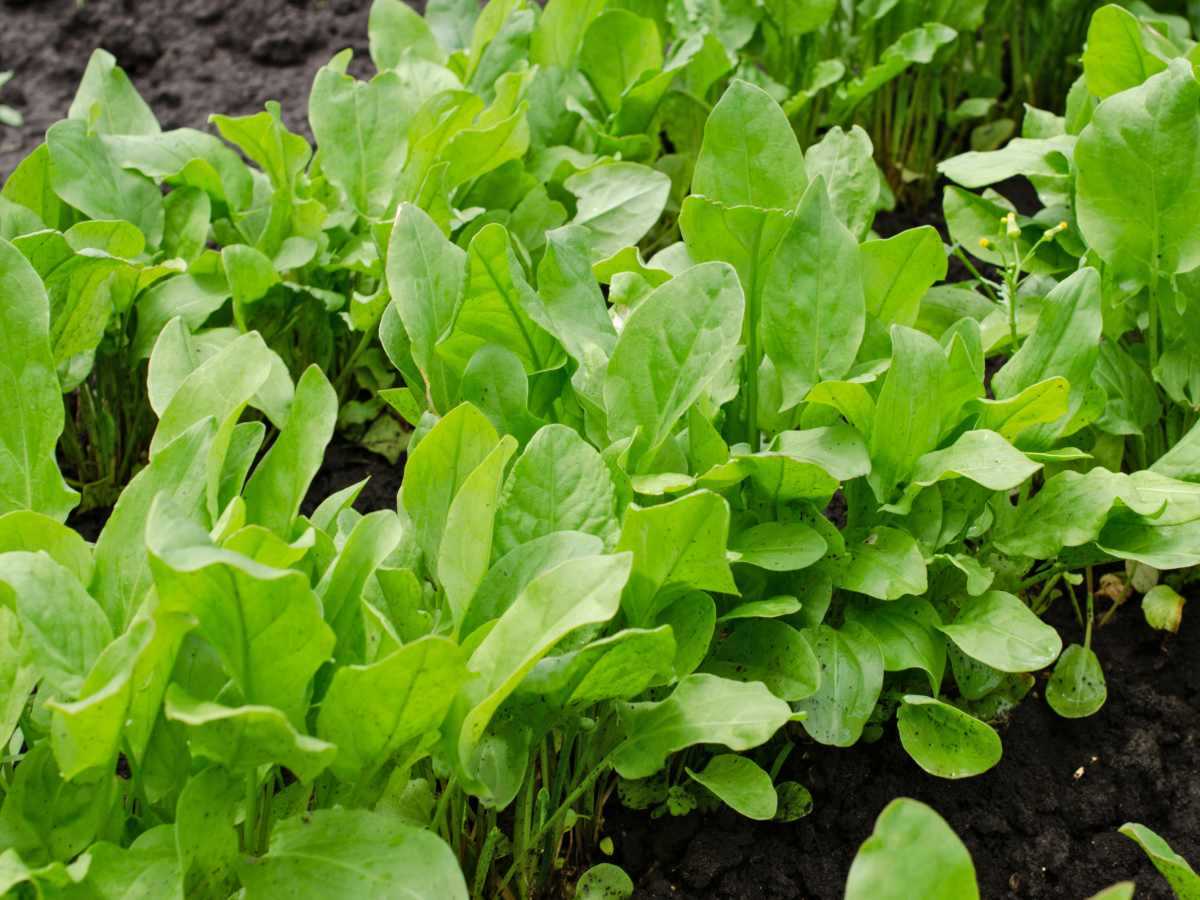
By being vigilant and taking preventive measures, you can minimize the impact of pests and diseases on your sorrel plants. Regularly inspecting your plants, maintaining good garden hygiene, and providing optimal growing conditions will help to ensure a healthy and productive sorrel crop.
“Question-Answer”
What is sorrel and how is it grown?
Sorrel is a leafy green vegetable that is grown primarily for its tart, lemony flavor. It can be grown in the vegetable garden from either seeds or transplants. It prefers rich, well-drained soil and full sun, and should be kept well-watered.
What are the properties of sorrel?
Sorrel is rich in vitamins A and C, as well as iron and potassium. It also contains antioxidants and has anti-inflammatory properties. It is often used in culinary recipes to add a tangy flavor to salads, soups, and sauces.
Can sorrel be grown in containers?
Yes, sorrel can be successfully grown in containers. Choose a large pot with good drainage and fill it with a high-quality potting mix. Place the pot in a sunny location and water regularly to keep the soil moist. Harvest the leaves as needed, starting from the outer ones.
How long does it take for sorrel to grow?
Sorrel can be harvested when the leaves are about 6-8 inches long, which usually takes about 6-8 weeks from planting. However, you can also start harvesting smaller leaves earlier if desired. Just make sure not to remove more than a third of the plant at once to allow for continuous growth.
Are there any pests or diseases that affect sorrel?
Sorrel is generally a hardy plant that is not prone to many pests or diseases. However, it can occasionally be attacked by aphids or slugs. To control aphids, spray the plants with a mixture of water and soap. For slugs, you can use handpicking or place traps to catch them.







